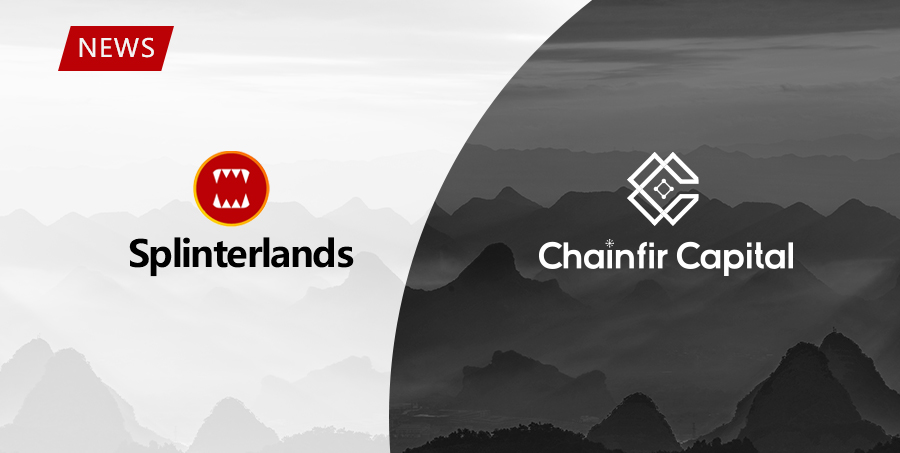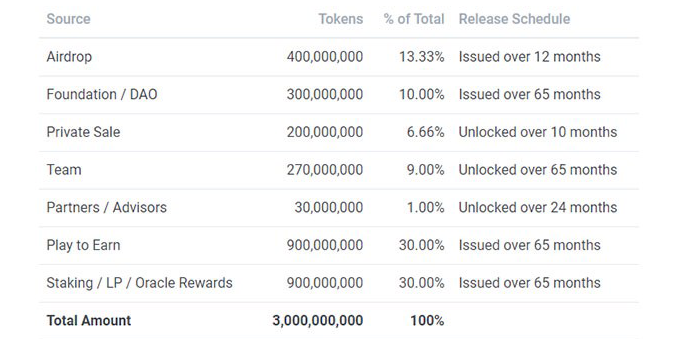Chainfir Capital Announces Investment in Splinterlands
Published:Sep 26, 2021

Today, we are honored to officially announce that we have completed our investment in Splinterlands.
Some well-known institutions that participated in this investment also include Animoca Brands, Blockchain Founders Fund, Enjin, Polygon, Yield Guild Games, Gate.io, 3Commas Capital, Alpha Sigma Capital, AGE Crypto Asset Investment Fund with a total investment of $3.5 million.
Chainfir Capital opines that Splinterlands is exquisitely designed, easy to use, with strong playability. The built-in NFT market can effectively provide liquidity, and the airdrop encourages more players to join the game. Hence, it can be said to be a potential project with a considerable market prospect.
.jpg)
Splinterlands (formerly known as Steemmonsters) is a Hive-based card trading game, with elements such as NFT and land auction added later. Similar to the traditional game Hearthstone, the game supports players to collect cards and combine different cards to compete against others. Of note, the winner can receive cards as well as Dark Energy Crystal (DEC) rewards after winning the game. Those cards can be played against, leveled, sold, or lent to other players, and scarce cards have greater collectible value.
What sets Splinterlands apart from others?
● Well-made screen & diverse gameplay
Its well-made game screen, cool special effects, and multiple gameplay make it a true chain game boutique. In addition to NFTization of various cards, Splinterlands also added elements such as land auctions, NFT card trading, card synthesis, and many others, to increase the liquidity of cards and land, solving an issue where most digital card games do not allow players to trade or sell game assets to other players.
● Cross-compatibility
Unlike most NFT games on the market, Splinterlands offers the feature of cross-compatibility with other blockchains including Tron, Ethereum, and WAX. Another unique point of Splinterlands is that the game has its own blockchain, which provides in-game stability and frequent upgrades to the card trading game.
● "Play to Earn" mode
Playing games and making money, you can have both together, which may be the highlight that Splinterlands can attract most cardless game lovers. Players can quickly participate in the game for only $10, which has a lower threshold compared with similar games. A variety of ways to make money are available for users, including completing daily tasks and earning seasonal rewards; playing games to earn crystal DEC; increasing the percentage of airdrop points and obtaining daily SPS airdrops; card trading, land trading, and land leasing, etc.
The more players want to earn, the more energy they need to spend on the rules of the game in an attempt to improve their level. As the rating and winning percentage increase, an increasing number of DECs will be given in a single game.
● Land expansion
If Splinterlands is merely a card trading game, its value and development space will be limited, and it will not be recognized by multiple players. In the future, Splinterlands' greater imagination lies in the land-based metaverse world where players can create guilds, build castles, and create a broader metaverse space. Previously, Splinterlands had experienced three rounds of land sales, each round of land was quickly robbed, and the land price rose from $10 at the beginning to $180.
● Airdrop incentives
On July 27, 2021, the Splinterlands team started the first airdrop of SPS tokens to all players totaling about 400 million over a one-year period. Everyone holding DEC tokens, card NFTs and/or land NFTs will receive SPS airdrops, and the proportion of each player's airdrops will be determined according to the weight of the in-game assets on the chain, further improving the game's economic model and incentives.
● Soaring daily activity
The current NFT card trading game Splinterlands has a daily activity of 100,000, ranking 2nd with an upward trend, up from 14,000 in August. And beyond that, Splinterlands has an average of 4 million transactions per day, according to statistics from DappRadar.
.png)
A Leaderboard of Games on DappRadar
● Dual-token mechanism
Splinterlands has designed a dual-token mechanism to prevent token price fluctuations from impacting player assets. At the same time, the release mechanism of governance tokens (SPS) and fuel tokens (DEC) is long combined with the game's life cycle.
Fuel Token (DEC)
The main function of the DEC token is to purchase various card packs, land, props, and improve personal rankings in the game. There are two main ways to obtain it:
a. Get DEC rewards after defeating other players in ranking matches;
b. Out-of-game purchase: TRX can be used to purchase on the trading platform.
Governance token (SPS)
SPS has a total circulation of 3,000,000,000, which is distributed as follows:

Source from: Splinterlands Litepaper
Among them, 400 million SPS will be airdropped to asset holders every day for a year. As a governance token, the value of SPS represents the value of the game. The current role of SPS is mainly reflected in community governance voting, game rewards, pledge rewards, and so on.